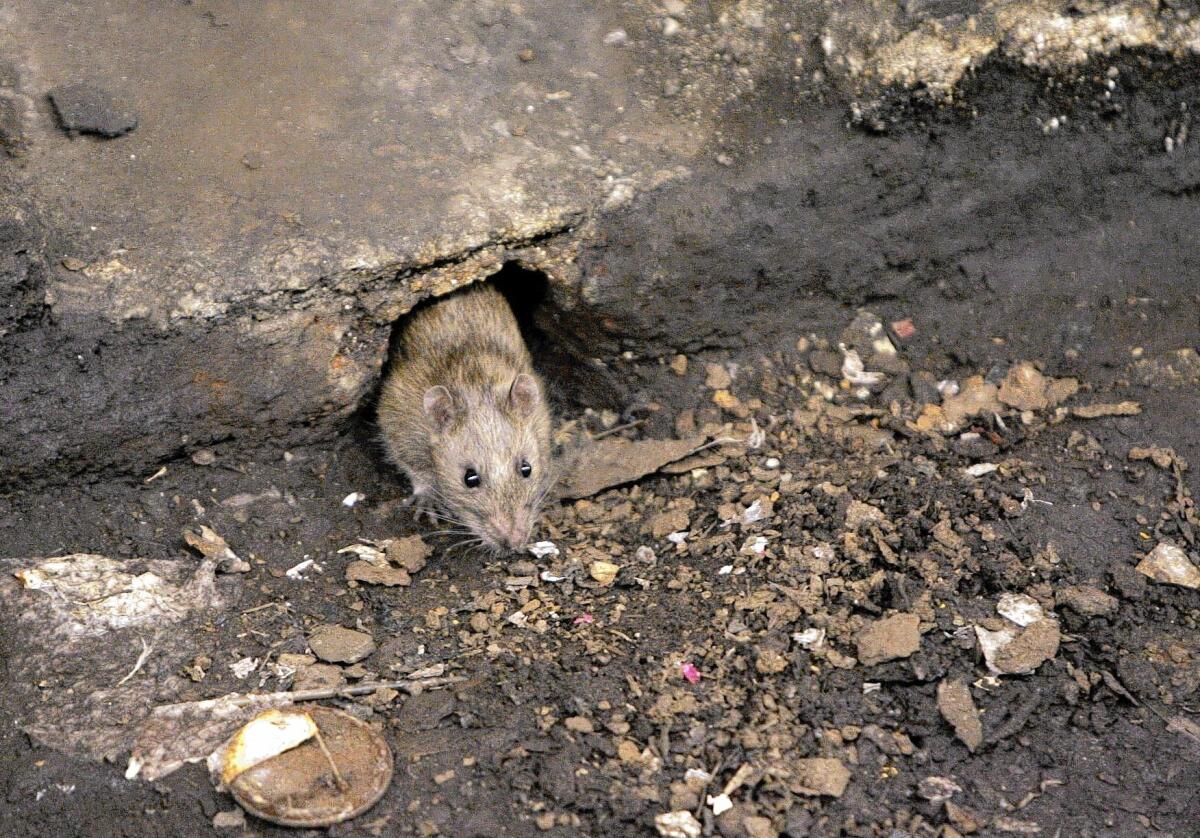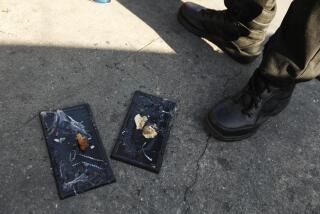New York City declares war on rats

Some things are a given in New York City: Rats in subways. Parking tickets. Rats in parks. Snowstorms. Rats on dark sidewalks. Noisy neighbors.
Did we mention rats?
By some estimates, there are more rats than humans in this city of 8.4 million, although it’s impossible to know for sure. One thing is certain: Most New Yorkers loathe rats, and the city this year is budgeting $611,000 for a new program targeting “rat reservoirs,” where the rodents congregate, in hopes of diminishing their numbers.
“This is about more than just aesthetics,” said City Councilman Mark D. Levine, describing the problem as “epidemic” on some streets in his district of Upper Manhattan.
“We’ve had rats who are going into cars and eating out electrical cables. We have rats that are entering homes,” Levine said at a public hearing this month where city health officials announced the additional anti-rat efforts.
With city officials striving to present the best image of New York to visitors — and with social media making every public rat sighting a potential embarrassment — rat-abatement efforts have increased.
Transit officials have tried a rat-sterilization program in the subways, and an online map created by the city’s Department of Health and Mental Hygiene enables people to search neighborhoods, streets and even specific addresses for rat issues.
The department also offers courses at its Rodent Academy that are geared toward building superintendents, homeowners and others interested in learning how to manage the rats in their lives.
Health experts say the brown Norway rats that thrive in New York generally do not pose a threat to humans, but that doesn’t stop people from freaking out when a fine example of Rattus norvegicus crosses their path.
A video taken last month showed subway riders wailing in distress and clambering atop seats as a rat took the A train traveling beneath the East River.
“Rat on the train!” someone hollered, but by then, the doors were closing. They didn’t open again for more than 2 minutes and 30 seconds, the time it took for the train to reach the next stop. A man in a suit leaped skyward, as if he were skipping rope, as the rat scurried down the center aisle.
A group called Ryders Alley Trencher-fed Society — or R.A.T.S. — regularly prowls some of the city’s rattiest areas, using their dogs to chase down and kill the rodents. It’s as much a chance to let their dogs exercise their hunting skills as to help alleviate the city’s rat issue, say participants, who post photographs of their forays on the group’s Facebook page.
Still, rats have their defenders. They include Debbie “The Rat Lady” Ducommun, of Chico, Calif., who heads the Rat Fan Club. Ducommun believes one reason rats unnerve people is because they like the same things humans like.
“We really hate the idea that rats want to basically eat the things we eat and get into our homes,” said Ducommun, who has 23 pet rats. “There aren’t too many wild animals that really want to come into our homes.”
Ducommun said domesticated rats make great pets. “They learn their names. You can teach them to do tricks,” she said. “They’re very social. If they’re raised around people, they form bonds and they want to come out and be with you.”
The feeling isn’t mutual.
Mary T. Bassett, the city health commissioner, indicated that the latest anti-rat effort is in keeping with Mayor Bill de Blasio’s vow to pay more heed to the problems of poor and working-class New Yorkers.
“Nobody wants rats in their community,” Bassett said. The $611,000 program is described as a pilot that will focus on areas of Manhattan and Bronx deemed especially ratty and that will target the burrows where rats make their homes.
This comes on top of the long-running “rat indexing” program, which involves surveying communities for evidence of rats and pressuring property owners to deal with their rats.
A walk through one rat-heavy neighborhood this week showed evidence of the rat indexing.
“WARNING!” read notices outside some buildings where rat poison had recently been used. Hand-scribbled dates indicated several recent visits by rodent inspectors. Some buildings had notices outside alerting residents to new trash disposal systems, including using interior garbage containers instead of bins on the street, which are more likely to draw rats.
“We are hopeful this ... will alleviate the rodent problem,” read a flier.
Beneath the teeming streets, the Metropolitan Transportation Authority is planning the second phase of a rat-sterilization study in partnership with SenesTech, a company based in Flagstaff, Ariz. SenesTech developed ContraPest, which sterilizes female rodents that eat it.
The first test of ContraPest in the subways ended last August. The next one begins in July, said MTA spokesman Kevin Ortiz.
“Anecdotally, they were able to see a reduction,” Ortiz said of the first effort, but he said more work was needed before actual numbers were clear.
Ortiz said MTA anti-rat efforts also include “fortifying” the underground rooms where trash is stored. That can be as simple as closing the gaps between the bottom of doors and the ground to prevent rats from squeezing into rooms.
City officials concede that there is only so much they can do about rats, and New Yorkers, perhaps even leaping subway riders, probably know that too.
Ruben Garcia, who lives in the Morningside Heights section of Manhattan, pointed to an overflowing public trash can at a busy intersection.
“There’s too many people and too much trash,” Garcia said. “If I were a rat, I’d probably like it here too.”
More to Read
Start your day right
Sign up for Essential California for news, features and recommendations from the L.A. Times and beyond in your inbox six days a week.
You may occasionally receive promotional content from the Los Angeles Times.






